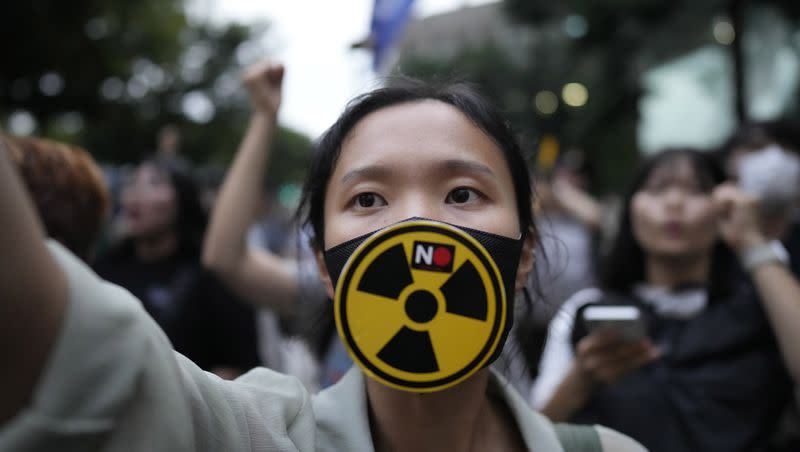Japan will begin releasing radioactive water into the sea. What does that mean?

- Oops!Something went wrong.Please try again later.
After months of pushback from neighboring countries and local residents, Japan is set to stream treated radioactive water into the ocean in phases, starting “on Aug. 24, weather conditions permitting,” said Japan’s Prime Minister Fumio Kishida, as reported by multiple online news sources.
The contaminated water has been collecting in tanks in the Fukushima nuclear plant ever since an earthquake in 2011 caused water within the plant to be polluted with highly radioactive material, CNN said.
“Since then, new water has been pumped in to cool fuel debris in the reactors, while ground and rainwater have leaked in, creating more radioactive wastewater. All this wastewater has so far been treated and stored in massive tanks,” per CNN.
With space running out, the Tokyo Electric Power Company (Tepco) said that the diluted radioactive water will be discharged in portions, starting with 7,800 cubic meters on Thursday, released throughout 17 days, per Reuters.
Related
“That water will contain about 190 becquerels of tritium per liter, below the World Health Organization drinking water limit of 10,000 becquerels per liter, according to Tepco,” said Reuters.
A becquerel is a unit used to measure radioactivity in a substance.
BBC said though the water has been filtered, it will not be radiation-free, “as it will still contain tritium and carbon-14-radioactive isotopes of hydrogen and carbon that cannot be easily removed from water,” but which are only dangerous when consumed in large quantities.

What do officials say?
The International Atomic Energy Agency said the release “met international standards and that the impact it would have on people and the environment was ‘negligible,’” according to Reuters.
CNN said, “The ocean release plan, which has been controversial from the start,” has received disapproval from China and the Pacific Islands. Chinese foreign ministry spokesperson Wang Wenbin said that Beijing “will take ‘necessary measures’ to safeguard food safety and its people’s health.”
Related
Kishida said even if the release takes multiple decades to complete, the government will see it through until all the treated water is disposed of, per The Associated Press.
The Associated Press added that Park Ku-yeon, first vice minister of South Korea’s Office for Government Policy Coordination, said that “South Korea will request Japan to immediately stop the discharge which could threaten safety of South Koreans” if the plan does not go smoothly.
According to BBC, fishermen in the area where the water will be dumped are worried about how the contaminated water could affect their lives.
“A crowd of protesters in Tokyo on Tuesday also staged a rally outside the prime minister’s official residence, urging the government to stop the release,” BBC said.

